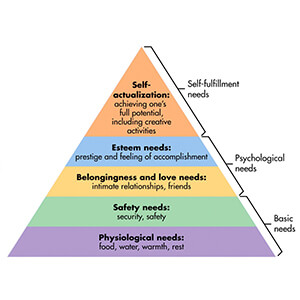Introduction:
Since the ‘motivation’ factor has been considered of paramount importance in the corporate world, various psychologists and researchers have presented their chunk of work in the form of theories and notions.

It should be in our best interest that one of them is Abraham Maslow’s “Need Hierarchy Theory” which is quite simple to understand and very effective in terms of opting it from the right directions.
It is a graphical presentation of the five most important human needs based on pyramid steps. Therefore, this theory enflames the argument of meeting up different needs in our lives through different situations.
The famous researcher went on confessing that conditioning theories are not encapsulating the human psychology up to the mark; since their behavior is complex and there’s a need of bringing up another master-class explanation to this.
This well-thought theory received traction when the researcher went on confessing that human actions are in accordance with the goal attainment. For example: a person who wants to experience social interaction would find a bar and make attempts in getting to know the people around him.
Abraham Maslow’s Need Hierarchy Theory (Main Aspects):
- Self Actualization
- Self-esteem
- Belongingness
- Safety
- Physiological Needs
Explanation:
Based on this formation, the famous researcher indicated that the first four needs can be labeled as “Lower-order Needs”, emphasizing upon having food, water, sleep and other basic aspects to head on with life. However, the top level of the hierarchy states otherwise and is considered as the “Growth Needs”.
Did it receive criticism?
Even though, the same researcher has been given a never-ending spree of criticism regarding his finesse to incorporate the total human needs under a single pyramid, the famous “Maslow’s Need Hierarchy Theory” has helped the new-era psychologists in finding new leads related to human behavior.

